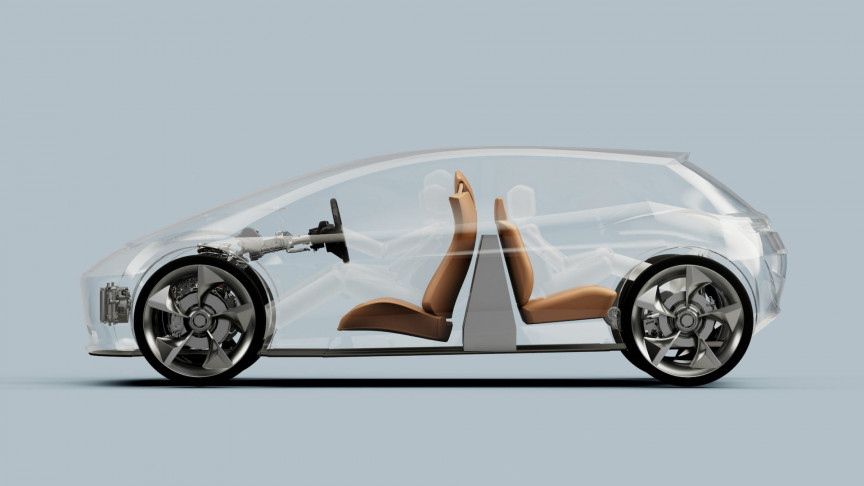
interestingengineering.com
Vertical Battery EV Concept Boosts Range by up to 30%
Page-Roberts' new streamlined EV concept removes the need for skateboards.
Science & Tech
It might not seem the case by now, but we're still at a relatively early stage when it comes to the development of electric vehicles (EVs). A new vehicle concept with a vertical battery concept by Page-Roberts shows that there is still a lot that can be done to maximize the range and potential of the vehicles.
Typically, EV automakers place the large batteries needed to power their vehicles underneath the floor. Though this seems like the logical way to fit these bulky components, there are definite drawbacks.
For one, adding a skateboard adds height, weight, and structural complexity to electric vehicles. Often, these requirements force EV automakers to design their vehicles with an extended wheelbase.
Page-Roberts' new design concept places the battery pack snugly between the front seats of the car and the seats at the back. There's one catch though — in order to fit the battery pack, the rear seats must also be rear-facing.
The seat arrangement, somewhat like that of a London taxi, allows for a far more compact electric vehicle design, and has the potential to allow for more aerodynamic EV designs that incorporate a standard wheelbase.
"The skateboard arrangement has become the mainstay of most EVs," explains Page-Roberts CEO, Freddy Page-Roberts. "But this results in taller vehicles with increased aerodynamic losses and energy consumption (especially at motorway speeds), extra structure required to protect against impact, and a longer wheelbase to account for the battery.
"The increased size and weight dramatically inhibit range. By simply moving the location of the battery pack, we have come up with a much more efficient solution," Page-Roberts continues.
Due to the fact that this design would be more streamlined and lighter, Page-Roberts explains that it has the potential to be up to 30% more efficient. This could either translate to improved range or smaller battery packs, the company says. It also reduces manufacturing costs by up to 36%.
More design freedom could lead to wider EV adoption
In its press release, Page-Roberts says its design is particularly suited to small EVs, and that it offers great design freedom, allowing for lower height sporty, sleek 4-seater designs.
The firm's CTO, Mark Simon, points to the fact that "challenges around battery cost and energy density along with range and charging infrastructure continues to stall progress with EVs.
"Our design concept reduces costs, increases efficiency, enhances agility, and offers design freedom," Simon says.
One could argue, quite reasonably, that the concept also adds a strict constraint on designers, as their designs will invariably have rear-seaters looking out the rear windshield — likely to be too much of a tradeoff for some.
Still, we'll add Page-Roberts to the list of promising recent concepts that have the potential to boost electric vehicle adoption and add freedom to designers. This week, another firm, Toronto-based startup Inmotive, announced a two-speed transmission for electric vehicles that could stop EV automakers from having to choose between high speed and torque.
Such concepts could make electric vehicles more like their ICE counterparts, without sacrificing sustainability, meaning more widespread adoption for electric vehicles as a whole.
























































